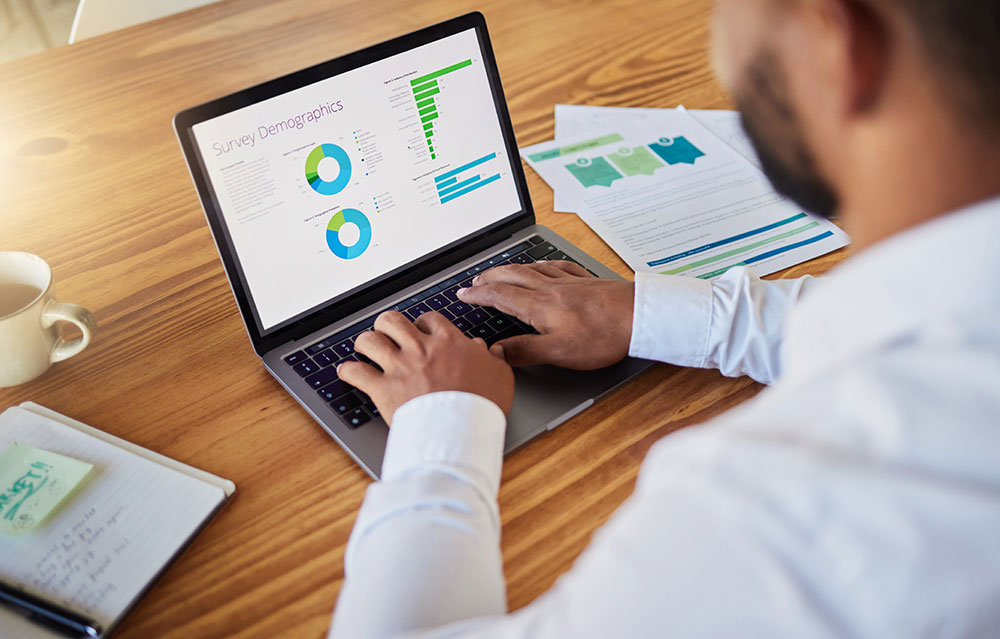Power BI vs. Microsoft Fabric
Power BI vs. Microsoft Fabric: Understanding the Differences and Practical Implementation
Microsoft has long been a leader in the business intelligence (BI) and analytics space, with Power BI being its flagship tool for data visualization and reporting. However, with the introduction of Microsoft Fabric, many organizations are wondering what this means for their existing Power BI projects and whether they should adopt Fabric.
This blog post will clarify the differences between Power BI and Microsoft Fabric, explain how they relate to each other, and provide guidance on when and how to implement Fabric effectively.
What is Power BI?
Power BI is a powerful analytics service that enables users to create interactive reports and dashboards. It is widely used for:
- Data visualization and exploration
- Self-service analytics with easy-to-use interfaces
- Data modeling using Power BI Desktop
- Collaboration and sharing via Power BI Service
Power BI primarily focuses on reporting and visualization, with Power Query and DAX (Data Analysis Expressions) providing powerful data transformation and analytical capabilities.
What is Microsoft Fabric?
Microsoft Fabric is a unified data platform that brings together various data engineering, data science, and analytics services. It provides an integrated environment for:
- Data ingestion and transformation (OneLake, Data Factory)
- Data engineering (Spark, Notebooks, Pipelines)
- Data science and AI (ML models, real-time analytics)
- Data warehousing and lakehouses (Synapse Data Warehouse, Lakehouse)
- Business intelligence (Power BI as an integral part)
- How Power BI and Fabric Relate to Each Other
Power BI is a component within Microsoft Fabric, specifically within the BI & Reporting layer. While Power BI primarily focuses on data visualization and reporting, Fabric provides a broader data management and analytics ecosystem, covering everything from ETL (Extract, Transform, Load) processes to machine learning and real-time analytics.
What Fabric Means (or Does Not Mean) for Existing Power BI Projects
What Fabric Does Not Mean:
- Fabric does not replace Power BI – Power BI remains a critical part of Microsoft’s analytics ecosystem.
- Fabric is not mandatory for Power BI users – If your current Power BI implementation meets your needs, you do not have to migrate to Fabric.
- Existing Power BI reports and dashboards will continue to function – Fabric does not disrupt ongoing Power BI projects.
What Fabric Does Mean:
- Power BI users can leverage Fabric for enhanced data management – You can use OneLake for centralized data storage and Lakehouses for better data governance.
- Improved performance for large-scale analytics – Fabric integrates with Synapse Data Warehouse and Spark, making large dataset analysis more efficient.
- Better collaboration and automation – Data engineers, data scientists, and analysts can work together in a unified environment.
Fabric is a very efficient and cost effective way to set up a centralized data repository. While in the past you had to combine a lot of infrastructure end services such as SQL Server and Azure Data Factory it’s now available as a single, well integrated, service.
Advantages of Microsoft Fabric
Fabric brings several key benefits, particularly for organizations with complex data workflows:
1. Unified Data Platform Fabric consolidates multiple Microsoft data solutions (Power BI, Synapse, Azure Data Factory) into a single environment, reducing data silos and simplifying infrastructure management.
2. Integrated OneLake Storage Instead of maintaining multiple data lakes, OneLake acts as a unified storage layer, making it easier to manage and access data across different services.
3. Advanced Data Processing with Spark Fabric includes Apache Spark support, allowing for large-scale data transformation, engineering, and AI-driven analytics.
4. Optimized Data Warehousing With Synapse Data Warehouse integrated into Fabric, organizations can efficiently handle large-scale analytical workloads with SQL-based queries.
5. Seamless Power BI Integration Fabric provides native support for Power BI, meaning you can connect to OneLake, Lakehouses, and Data Warehouses without complex configurations.
6. Cost Efficiency and Simplified Licensing Fabric unifies licensing under Microsoft Fabric Capacity, making it easier to manage costs compared to multiple individual Azure services.
When to Use Microsoft Fabric
Fabric is particularly beneficial when:
You need a centralized data lake for multiple teams and services. Your Power BI projects involve large enterprise-scale datasets that require efficient storage and processing.
You want to integrate real-time analytics, machine learning, and data engineering alongside BI reporting.
Your organization is already using Azure Synapse, Data Factory, or Power BI, and you want a more unified approach. Not that there is no obligation to move to Fabric. If your existing setup is working fine and you’re happy with it, keep it. It does make sense to move to Fabric if you want to simplify your IT and BI landscape and reduce maintenance or potential points of failure.
If your Power BI usage is limited to basic reporting and visualization, and your current data sources work well without advanced engineering, you may not need Fabric at this stage.
Microsoft Fabric expands the possibilities for Power BI users, offering a comprehensive data ecosystem beyond reporting. While Power BI continues to serve as a powerful BI tool, Fabric enables greater scalability, efficiency, and data collaboration. Power Bi is not going away. It just became a component under the Fabric umbrella. Power Bi is very much alive with active development, new feature every month and a supportive online community.
If your organization needs a modern, unified data platform with advanced analytics, data governance, and AI capabilities, Microsoft Fabric is worth considering. However, if you’re solely focused on Power BI for traditional reporting, you can continue using it independently without adopting Fabric.
Power BI = Best for data visualization and reporting.
Microsoft Fabric = Best for end-to-end data management, analytics, and AI-driven insights.
By understanding the strengths of both, organizations can make informed decisions on when and how to transition to Fabric for maximum value.
FAQs
Is Microsoft Fabric a replacement for Power BI? No, Power BI remains a key part of Microsoft’s analytics suite, and Fabric enhances its capabilities by providing a unified data platform.
Do I need to migrate my existing Power BI reports to Fabric? No, existing Power BI reports and dashboards will continue to function as usual without requiring migration to Fabric.
Can I use Fabric if I only need Power BI for reporting? Yes, but Fabric is most beneficial for organizations that require broader data management, analytics, and AI integration.
Does Fabric require Azure expertise? While Fabric simplifies many processes, some knowledge of Azure services can be helpful for advanced implementations.
How does licensing work for Fabric? Fabric operates under a unified licensing model called Microsoft Fabric Capacity, which simplifies cost management compared to separate Azure services.


